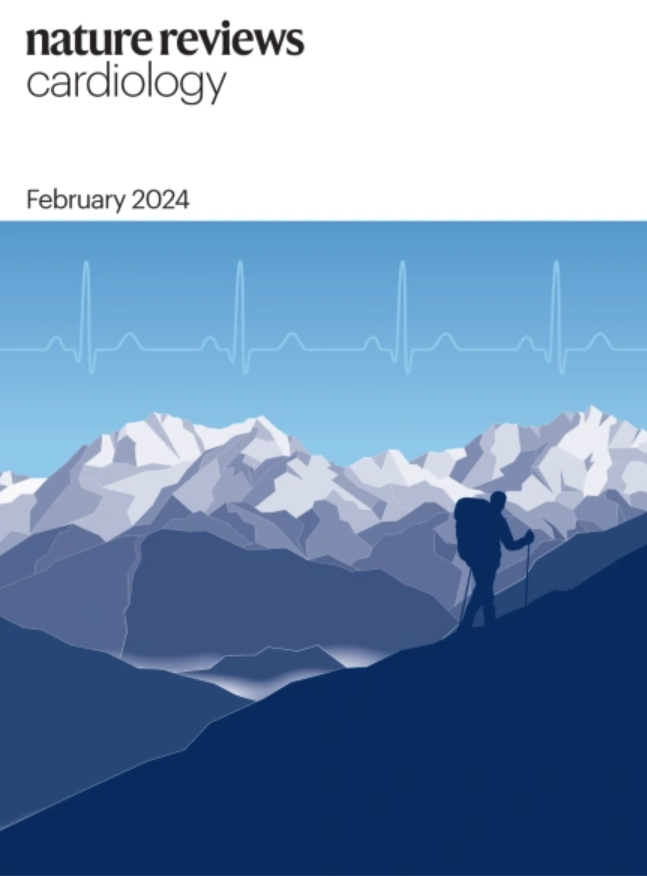Vascular (dys)function in the failing heart
IF 44.2
1区 医学
Q1 CARDIAC & CARDIOVASCULAR SYSTEMS
引用次数: 0
Abstract
Heart failure (HF) is not confined to contractile failure of cardiomyocytes or myocardial fibrosis. Coronary and systemic vascular dysfunction contributes to the initiation and progression of HF with or without reduced ejection fraction. Furthermore, HF compromises vascular function, creating and sustaining a vicious cycle with deranging effects on coronary blood flow, cardiac metabolism and cardiac function. In HF, systemic arterial dysfunction, characterized by increased arterial stiffness and resistance, raises cardiac afterload and impedes myocardial contractile function. Reduced coronary blood flow impairs myocardial oxygen delivery and consequently cardiomyocyte metabolism and function. Coronary microvascular dysfunction is heterogeneous in its pathogenesis and manifestations, complicating the diagnosis and management across different HF phenotypes. Understanding the alterations in function in different segments of the vasculature, from the aorta to the capillary level, offers mechanistic insights into disease drivers and therapeutic interventions. Interventional approaches can improve vascular haemodynamics, whereas established and emerging pharmacotherapies target the neurohumoral axis and reduce extravascular compression, inflammation, and oxidative stress, thereby improving vascular function and HF-related outcomes. In this Review, we provide a mechanistic framework of vascular dysfunction in the pathogenesis of HF with or without reduced ejection fraction, pointing towards integrated therapies that consider the vascular implications of contemporary HF management across HF phenotypes. Coronary and systemic vascular dysfunction contributes to the initiation and progression of heart failure (HF) with or without reduced ejection fraction and, vice versa, HF compromises vascular function. In this Review, Liberale and colleagues discuss vascular dysfunction in the pathogenesis of HF and how pharmacological, interventional and surgical management of HF can improve vascular function.

衰竭心脏的血管功能。
心力衰竭(HF)并不局限于心肌细胞的收缩性衰竭或心肌纤维化。无论射血分数是否降低,冠状动脉和全身血管功能障碍都有助于HF的发生和发展。此外,心衰损害血管功能,形成并维持恶性循环,对冠状动脉血流、心脏代谢和心脏功能产生紊乱影响。在心力衰竭中,全身动脉功能障碍,以动脉僵硬和阻力增加为特征,增加心脏后负荷并阻碍心肌收缩功能。冠状动脉血流量减少会损害心肌氧输送,从而影响心肌细胞的代谢和功能。冠状动脉微血管功能障碍的发病机制和表现具有异质性,使不同HF表型的诊断和治疗复杂化。了解从主动脉到毛细血管水平的不同血管段功能的改变,为疾病驱动和治疗干预提供了机制上的见解。介入治疗可以改善血管血流动力学,而现有的和新兴的药物治疗针对神经体液轴,减少血管外压迫、炎症和氧化应激,从而改善血管功能和hf相关的结果。在这篇综述中,我们提供了一个关于有或没有射血分数降低的HF发病机制中的血管功能障碍的机制框架,指出了考虑到当代HF管理在HF表型中的血管意义的综合治疗。
本文章由计算机程序翻译,如有差异,请以英文原文为准。
求助全文
约1分钟内获得全文
求助全文
来源期刊

Nature Reviews Cardiology
医学-心血管系统
CiteScore
53.10
自引率
0.60%
发文量
143
审稿时长
6-12 weeks
期刊介绍:
Nature Reviews Cardiology aims to be the go-to source for reviews and commentaries in the scientific and clinical communities it serves. Focused on providing authoritative and accessible articles enriched with clear figures and tables, the journal strives to offer unparalleled service to authors, referees, and readers, maximizing the usefulness and impact of each publication. It covers a broad range of content types, including Research Highlights, Comments, News & Views, Reviews, Consensus Statements, and Perspectives, catering to practising cardiologists and cardiovascular research scientists. Authored by renowned clinicians, academics, and researchers, the content targets readers in the biological and medical sciences, ensuring accessibility across various disciplines. In-depth Reviews offer up-to-date information, while Consensus Statements provide evidence-based recommendations. Perspectives and News & Views present topical discussions and opinions, and the Research Highlights section filters primary research from cardiovascular and general medical journals. As part of the Nature Reviews portfolio, Nature Reviews Cardiology maintains high standards and a wide reach.
 求助内容:
求助内容: 应助结果提醒方式:
应助结果提醒方式:


